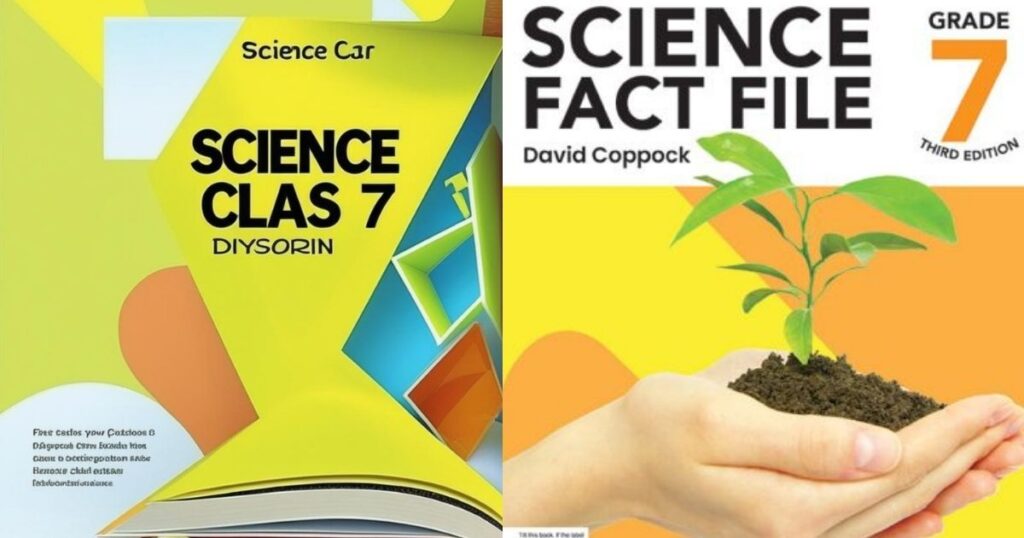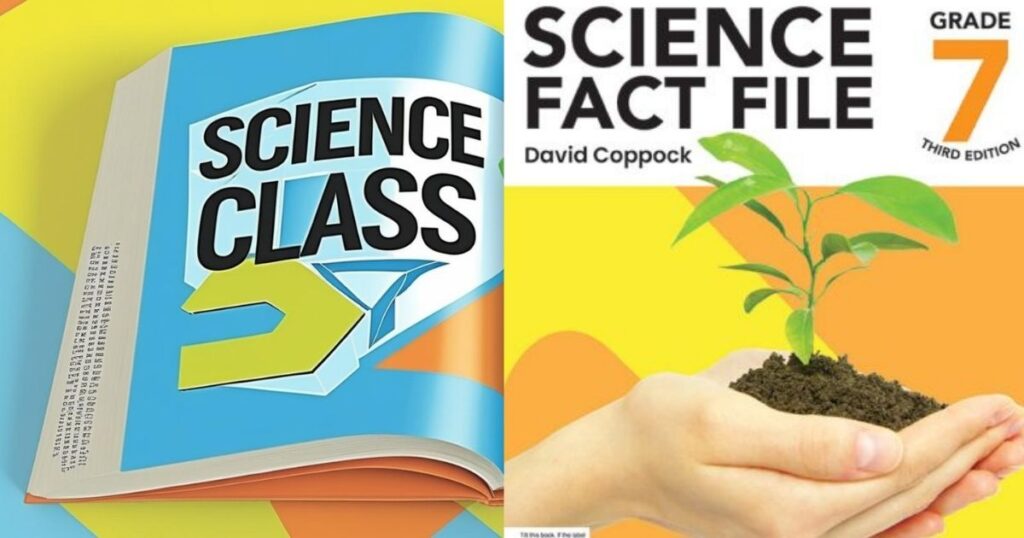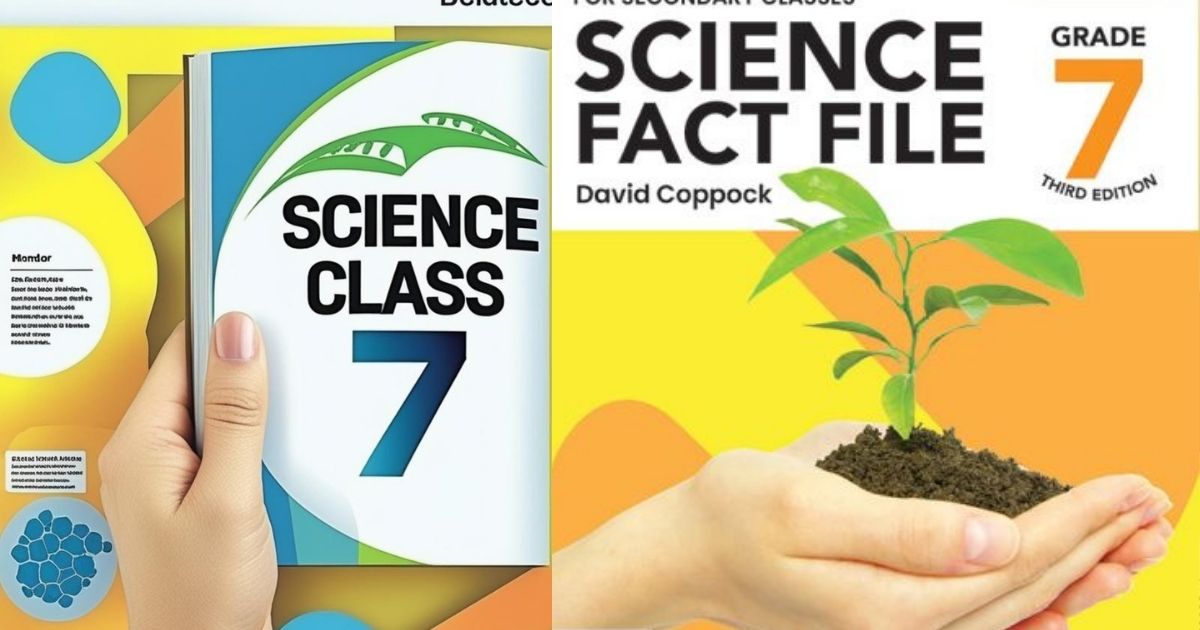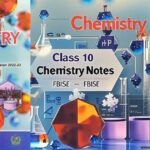Class 7 Science helps students understand the world around them. It covers topics like biology, chemistry, and physics. Also, Class 7 Science teaches about space, energy, and technology. The book follows the Single National Curriculum (SNC) 2022. Besides, it promotes inquiry-based learning and critical thinking. For example, students learn through experiments and simple activities.
In addition, Class 7 Science supports concept clarity for future classes. Similarly, other helpful resources include tarjamatul Quran class 9, pak studies class 9 book, and class 9 maths notes. You can also find maths class 9 book pdf federal board and class 9 chemistry chapter 1 solved exercise pdf. These support learning beyond Class 7 Science. Moreover, guides like adamjee notes for class 9, class 9 physics notes, and tehkal notes class 9 physics are useful. So, start your Class 7 Science journey with confidence.
Chapter-Wise Science Class 7 Notes
INTRO: Understanding the Importance of Scientific Data in Class 7 Science

This chapter introduces the core concepts of Class 7 General Science, emphasizing the importance of scientific data in building knowledge. Students are encouraged to explore the inquiry-based learning approach, which aligns with the Federal Board science syllabus. By examining biology, chemistry, and physics, learners gain a clear understanding of how data informs scientific discovery and everyday life.
The Single National Curriculum (SNC) 2022 emphasizes the need for concept clarity and the development of critical thinking. It covers topics such as Plant Systems and the Human Respiratory and Circulatory System, all vital for students. The chapter connects scientific concepts to real-world applications, encouraging students to engage in hands-on science experiments and explore educational resources for Class 7.
Chapter 1: Exploring Plant Systems in Class 7 Science
Respiratory system
The respiratory system in Class 7 science plays a crucial role in the intake of oxygen and the expulsion of carbon dioxide. Oxygen is used in aerobic respiration to produce energy, while anaerobic respiration occurs in the absence of oxygen. The chapter explains the structure and function of the lungs, trachea, and alveoli, aligning with the Federal Board science syllabus and the Single National Curriculum (SNC) for concept clarity.
Circulatory system
The circulatory system works closely with the respiratory system to deliver oxygen and nutrients throughout the body. The heart pumps blood through arteries, veins, and capillaries, providing essential support for the body’s functions. This chapter explains how blood circulation occurs in both pulmonary and systemic pathways. Students gain insights into how blood pressure, nutrient exchange, and oxygen transport are critical in maintaining overall body health, aligned with the Class 7 biology section.
Chapter 2: Understanding the Human Respiratory and Circulatory Systems
Pathogens and Diseases
Pathogens, including bacteria, viruses, parasites, and fungi, are microorganisms that cause various diseases. Bacteria such as those responsible for strep throat and tuberculosis can damage tissues or produce toxins. Viruses like influenza and COVID-19 reproduce inside living cells. Parasites and fungi can also cause infections like malaria and athlete’s foot. The chapter highlights the importance of understanding these pathogens for preventing and treating diseases, key to global scientific literacy in Class 7 biology.Pathogens and the
Diseases They Cause
Infectious diseases are triggered by pathogens such as viruses, bacteria, and parasites. Diseases like malaria, Hepatitis, and Measles spread in different ways, with symptoms like fever, fatigue, and rashes. The chapter emphasizes the importance of vaccination, hygiene practices, and protective measures like masks in preventing diseases. This is essential for Class 7 science students to understand how science-based learning can help reduce the spread of diseases and improve health awareness
Chapter 3: Immunity and Diseases in Class 7 Science

Pathogens and Diseases
Pathogens, including bacteria, viruses, parasites, and fungi, are responsible for various infectious diseases. These microorganisms cause illnesses like Typhoid, Malaria, and COVID-19 by damaging tissues or producing harmful toxins. The chapter stresses the importance of understanding pathogens to prevent diseases. With knowledge from Class 7 General Science, students can learn how to mitigate these risks through hygiene practices and vaccination, key components of global scientific literacy.
Pathogens and the Diseases
They Cause Infectious diseases, such as Measles, Dengue, and Hepatitis, spread through different means and exhibit symptoms like fever and fatigue. The chapter emphasizes how vaccination, good hygiene, and wearing protective gear can reduce the risk of infection. This aligns with the Class 7 science curriculum, helping students understand how various diseases are transmitted and how to protect themselves through prevention, emphasizing the value of health awareness and disease management strategies
Chapter 4: Structure of an Atom in Class 7 Science
Atomic Structure and Subatomic Particles
Atoms are incredibly small, with 100 million atoms making up just 1 cm. An atom consists of a dense, positively charged nucleus containing protons and neutrons, surrounded by negatively charged electrons. The study of atomic structure has evolved over time, with key contributions from scientists like John Dalton, J.J. Thomson, Ernest Rutherford, and Niels Bohr. Understanding atomic structure is foundational for grasping Class 7 science concepts in physics and chemistry.
Atomic Number, Mass Number, and the Periodic Table
Atomic number represents the number of protons in an atom, while mass number is the sum of protons and neutrons. The Periodic Table organizes elements based on increasing atomic number. Groups and periods help categorize elements, with groups indicating the number of electrons in the outer shell. Special groups like alkali metals, halogens, and noble gases have distinct chemical properties, crucial for understanding chemical reactions in Class 7 science.
Chapter 5: Understanding Physical and Chemical Changes in Class 7 Science
Physical and Chemical Changes
Changes in matter are constant and can be classified into two types: physical and chemical changes. Physical changes do not create new substances and are usually reversible, such as melting ice or crushing metal. In chemical changes, new substances are formed, and energy is either released or absorbed. Examples of chemical reactions include burning fuel and toasting bread, which illustrates the breaking and forming of bonds in line with Class 7 chemistry concepts.
Oxidation and Corrosion
Oxidation occurs when a substance reacts with oxygen, leading to the formation of oxides, such as rusting and tarnishing. For instance, rusting happens when iron reacts with oxygen and moisture to form iron oxide. Similarly, metals like silver and copper undergo tarnishing through chemical reactions with air. Preventing corrosion is essential, and methods like electroplating or applying protective coatings can keep metals from deteriorating, which is a key concept in Class 7 physical science.
Chapter 6: Exploring Chemical Bonds in Class 7 Science
Chemical Bonds
Chemical bonds form when atoms attract each other to create molecules. These bonds occur through ionic bonding and covalent bonding. In ionic bonding, one atom loses electrons, and another gains them, forming positive and negative ions, as seen in sodium chloride (NaCl). Covalent bonding involves atoms sharing electrons, like in hydrogen (H₂) or oxygen (O₂) molecules. The valency of elements determines their bonding behavior, crucial for understanding chemical reactions.
Ions and Valency
In chemical reactions, atoms either lose or gain electrons, forming ions. Positive ions (cations) are created when atoms lose electrons, and negative ions (anions) are formed when atoms gain electrons. Valency refers to the number of electrons an atom can gain, lose, or share during reactions. This concept helps explain how ionic and covalent bonds form and aids in determining the chemical formulas of compounds like calcium chloride (CaCl₂) or ammonia (NH₃).
Also read: Complete Guide to Class 7 English Oxford Book Notes: PDF

Chapter 7: Solutions in Chemistry for Class 7
Mixtures, Solutions, and Suspensions
When solids mix with liquids, they form either mixtures, solutions, or suspensions. If the solid dissolves, a solution forms, with the solute breaking into tiny particles. Water, known as the universal solvent, dissolves many substances, but oils require different solvents. Solutions are an essential part of Class 7 chemistry, as understanding how substances dissolve and interact is crucial for science-based learning in both school and real-world applications.
Concentrated and Dilute Solutions
The concentration of a solution is determined by how much solute is dissolved in the solvent. A concentrated solution has a high amount of solute, while a dilute solution contains a small amount. Solubility, which refers to how much solute can dissolve in a solvent, plays a key role in creating saturated solutions. Understanding concentration and solubility is critical in both the Class 7 science curriculum and real-world chemistry.
Chapter 8: Force and Motion in Physics for Class 7
Forces and Their Effects
A force is a push or pull that can change an object’s shape, motion, or speed. Forces are categorized as contact forces (like bending or friction) and non-contact forces (such as gravity). Measured in newtons (N), forces can move stationary objects or change the direction or speed of moving objects. This concept is fundamental in Class 7 physics and helps explain the dynamics of motion and forces in nature.
Speed and Distance-Time Graphs
Speed is how fast an object moves, measured in meters per second (m/s) or kilometers per hour (km/h). Average speed is calculated by dividing total distance by total time. Distance-time graphs visually represent the motion of an object over time, where straight lines indicate constant speed, and curved lines show acceleration or deceleration. These concepts are essential for understanding motion and kinematics in the Class 7 science syllabus.
Chapter 9: Waves and Energy in Class 7 Science
Waves and Types
In Class 7 science, waves are categorized into mechanical and electromagnetic waves. Mechanical waves require a medium, like air or water, to travel, such as sound waves and water waves. Electromagnetic waves, like light and radio waves, can travel through a vacuum. The study of transverse waves and longitudinal waves helps explain the behavior and properties of different types of waves, important for understanding wave motion and energy transfer.
Sound and Energy Transfer
Sound is a type of mechanical wave that requires a medium (air, water, or solids) to travel. The speed of sound is slower than light, with sound taking about 3 seconds to travel 1 km. Sound waves, when reflected off hard surfaces, create echoes, a key concept in physics. Practical investigations in Class 7 explore how sound waves travel and how materials can be used for sound insulation, helping students understand the transfer of energy.
Chapter 10: Heat and Temperature in Class 7 Science
Heat and Temperature
Heat is the transfer of energy from a warmer object to a cooler one, and temperature measures how hot or cold something is. Thermometers are used to measure temperature, a key concept in the Class 7 General Science Book. Heat energy is linked to the motion of particles, with faster movement at higher temperatures. Absolute zero, the lowest possible temperature, occurs at -273.15°C or 0 Kelvin, where particles stop moving completely.
Transfer of Heat and Methods
Heat transfer occurs through conduction, convection, and radiation. Conduction happens through solids, while convection occurs in liquids and gases, with warmer regions rising and cooler regions sinking. Radiation transfers heat via electromagnetic waves, and it doesn’t require a medium. Vacuum flasks are designed to minimize heat loss, leveraging these principles. Understanding thermal expansion and contraction helps explain how substances change state, which is a critical concept in Class 7 science, particularly in physics.
Chapter 11: Earth and Space in Class 7 Science
Gravity and Weight
Gravity, proposed by Sir Isaac Newton, is the force that attracts masses towards each other. It pulls objects towards the Earth and keeps the planets in orbit around the Sun. Weight is the force exerted by gravity, and it varies depending on location. For example, on Earth, 1 kg weighs 10 N, while on the Moon, it weighs 1.6 N. The formula for calculating weight is: Weight = Mass × Gravity, a key concept in Class 7 physics.
Tides and Earth’s Movement
Tides are caused by the gravitational pull of the Moon and Earth’s rotation. Spring tides occur when the Sun and Moon align, creating higher high tides. Neap tides happen when the Sun and Moon are at right angles, resulting in moderate tides. The Earth’s rotation creates day and night every 24 hours, and orbiting the Sun takes approximately 365.25 days, contributing to seasons and other natural phenomena in the Class 7 science curriculum.
Chapter 12: Technology in Everyday Life for Class 7 Science
Irrigation Systems and Water Use
Drip irrigation is a highly efficient system that delivers water directly to plant roots, minimizing water wastage. Sprinkler irrigation, which mimics rainfall, covers larger areas but leads to water loss through evaporation. These irrigation methods play a vital role in modern agriculture technology, helping conserve water while maximizing crop yield. Understanding such technology in everyday life is crucial for Class 7 students to see the practical application of science in environmental conservation.
Food Preservation Techniques and Solution Concentration
Food preservation techniques such as freezing, canning, and drying extend the shelf life of food by preventing the growth of microorganisms. These methods maintain nutritional value and prevent spoilage. Similarly, solution concentration can be adjusted by adding more solvent, which dilutes the solute. This concept is applied in practical settings, such as adjusting the strength of cleaning solutions or beverages, showcasing the role of science in everyday life.
Readers al like: Complete Class 7 Urdu Notes – Free PDFs & Downloads

Conclusion
Class 7th Science is more than just a school subject it builds the foundation for higher classes like class 9, class 10, and even 1st year. From biology to chemistry and physics, every topic connects to advanced levels such as physics class 10, class 10 chemistry notes, and maths class 10 notes. As you move ahead, using resources like adamjee notes for class 9, pak studies class 9 book, and class 9 chemistry chapter 1 solved exercise pdf will give you a strong head start. Similarly, class 9 physics notes and maths class 9 notes federal board prepare you for the future.
To get better at Class 7 Science, use free downloads, practice with past papers, and explore class notes, notes pk, and class 10 physics notes. Whether you’re studying tarjamatul Quran class 9 or preparing for the federal board result 2025, staying consistent is key. Start now—your science success begins here.
Frequently Asked Questions (FAQs)
Where can I download the Science Fact File Class 7 PDF for free?
You can download the Science Fact File Class 7 PDF from educational resource platforms like Taleem360, Ustad360, and Schoolzi. These platforms provide free access to textbooks from Oxford, STBB, PCTB, and Federal Board (FBISE), aligned with the Single National Curriculum (SNC) 2025.
Is there a Science Fact File Class 7 Teaching Guide available?
Yes, the Science Fact File Class 7 Teaching Guide is available as a PDF for free download. It includes lesson plans, practical activities, and concept explanations tailored for classroom teaching.
What topics are covered in Science Fact File Class 7 Chapter 2?
Chapter 2 typically covers core science concepts such as Plant Systems or Structure of an Atom, depending on the edition (Oxford / STBB / Federal). The focus is on inquiry-based learning and concept clarity.
Is the Class 7 Science Book available in PDF for all Pakistani boards?
Yes. You can find Class 7 Science Book PDFs for:
- Punjab Board (PCTB)
- Federal Board (FBISE)
- Sindh Board (STBB)
- KPK and Balochistan boards
All these are based on SNC 2022 or the latest 2025 updates.
How is the Oxford Class 7 Science Book different from board textbooks?
The Oxford Class 7 Science Book often includes more interactive elements, diagrams, and exercises based on global scientific literacy standards like TIMSS. It supports the SNC but leans toward inquiry-based learning.



